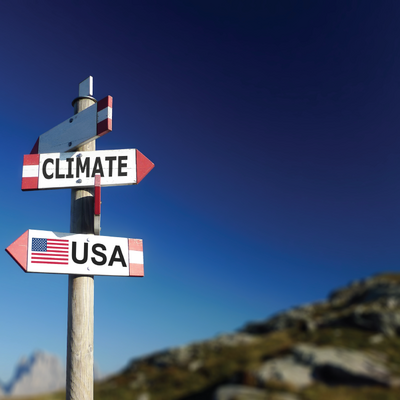Climate One TV: The Paris Agreement at Three And How Some Countries Are Solving Climate Change
Guests

Katharine Mach

Trevor Houser

Joshua Goldstein

Staffan Qvist
Summary
Three years after it was signed, are supporters of the Paris Agreement still correct that it’s the first truly global step toward a sustainable future, or are critics right that the pact is not nearly ambitious enough?
“The Paris agreement in some ways has this top-down, bottom-up relationship,” says Katharine Mach, a Senior Research Scientist at Stanford University and a co-leader of the IPCC working group on impacts, adaptation and vulnerability. “If 30 years from now we look back and say the Paris agreement was successful, largely it will be because it has provided predictability to enable all of the other bottom-up action.”
But, she adds, “if you really wanna say are we doing enough, the answer hands down, still is no.”
Not enough to meet the ambitious Paris target of limiting post-industrial warming to 1.5°, perhaps. But there are risks to framing the success or failure of Paris as a binary challenge where either the world gets to 1.5° or it’s Armageddon.
”The progress that we've already made in bending the emissions curve down has avoided just a massive amount of future human suffering,” says Trevor Houser, a partner at the Rhodium Group, where his team focuses on analyzing the economic risk of global climate change. “And the progress that is certainly within our reach is another large quantum of benefit that we shouldn’t abandon while continuing to work towards that one 1.5°, 2° target.”
And later in the show:
Climate change is a global problem that no one country can solve on its own. And when it comes to cutting emissions, some countries are moving quickly. But the absence of U.S. climate leadership is causing others to ease off their goals.
“We need to decarbonize the world economy really quickly and at massive scale,” says Joshua Goldstein, co-author of A Bright Future: How Some Countries Have Solved Climate Change and the Rest Can Follow. “The metric that matters here is carbon going into the atmosphere,” he notes. “It's not how many renewables you put in or how many nuclear plants you put in... it’s how much carbon is going up.”
Goldstein’s co-author, energy consultant Staffan Qvist, points to his native Sweden as one country that has successfully decarbonized its electricity grid. “In Sweden, for instance, half of the power comes from hydroelectric and half from nuclear,” he explains, “so it's kind of the ideal place in the world to try to do 100% renewables.”
But Qvist points to another European country – Germany – as illustrating the perils of pursuing a goal of 100% renewables for its own sake.
#letstalkclimate
Paris was more successful than Copenhagen 2:33
Is Paris healthy at three? 6:01
The Climate Action Tracker: 9:19
How Some Countries Are Solving Climate Change 13:00
Three Mile Island, Chernobyl and Fukushima 20:16

